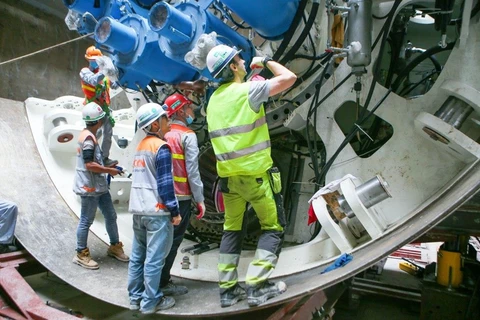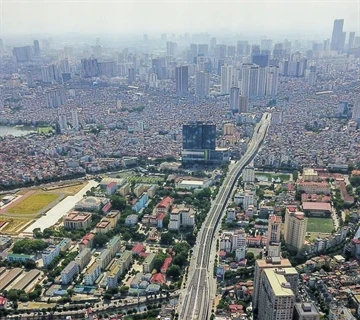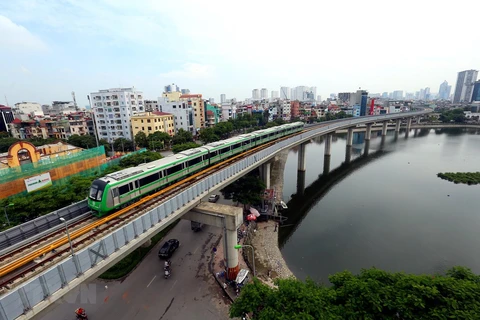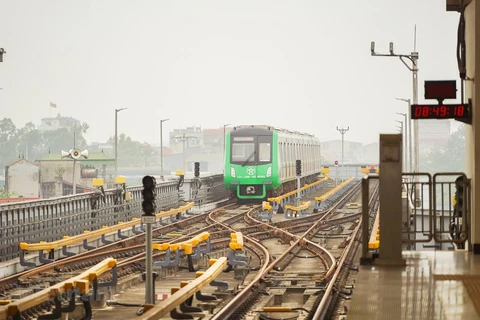Hanoi (VNA) – A train was safely commissioned on a 10-km elevated section of the Hanoi urban railway line No.3 (Nhon-Hanoi Station) from Nhon depot to Cau Giay station on July 1.
The train departed from the Nhon depot to the S8 station, then it ran in reverse.
As scheduled, the interlocking commission will be carried out by foreign experts of the contractor in compliance with the project's technical requirements and procedures.
 Six out of 10 trains were transported to the Nhon depot for pairing, calibrating and performing static and dynamic tests before being put into official operation (Photo: VNA)
Six out of 10 trains were transported to the Nhon depot for pairing, calibrating and performing static and dynamic tests before being put into official operation (Photo: VNA) According to the Metropolitan Railway Management Board (MRB), six out of 10 trains were transported to the Nhon depot for pairing, calibrating and performing static and dynamic tests before being put into official operation.
As of late June, 72.79 percent of the project's workload had been completed. The items of information, signals, and electricity supply for overhead stations has been wholly done.
 The items of information, signals, and electricity supply for overhead stations has been wholly done (Photo: VNA)
The items of information, signals, and electricity supply for overhead stations has been wholly done (Photo: VNA) MRB said during the interlocking commission phase, trains will be operated along the route in accordance with different operating modes. Corresponding to each speed range, specific inspection procedures for trains and other items of the project will be performed.
The urban metro railway line No.3, connecting Nhon and Hanoi Station, uses ten trains designed and manufactured by Alstom of France.
 The project has an investment of about 30.1 trillion VND (1.29 billion USD) comes from official development assistance of the French Development Agency and loans from the French Government (Photo: VNA)
The project has an investment of about 30.1 trillion VND (1.29 billion USD) comes from official development assistance of the French Development Agency and loans from the French Government (Photo: VNA) The project has an investment of about 30.1 trillion VND (1.29 billion USD) comes from official development assistance of the French Development Agency and loans from the French Government.
It will span 12.5km, running through six districts: Nam Tu Liem, Bac Tu Liem, Cau Giay, Ba Dinh, Dong Da and Hoan Kiem. It consists of 12 stations, including eight elevated and four underground./.
VNA
























